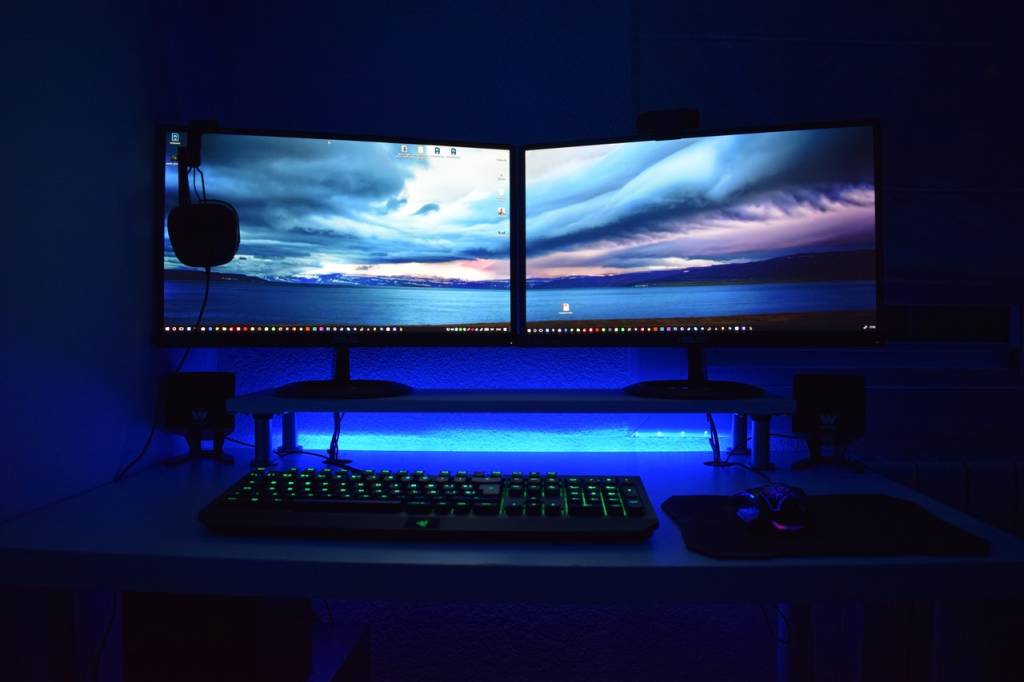Blue light technology, while environmentally favorable, has the potential to disrupt sleep and cause sickness.
Until artificial lighting was invented, the sun was the primary source of illumination, and people spent evenings in relative darkness. Much of the world is now illuminated at night and we often take for granted our access to those lumens. Furthermore, blue light technology, found in screens of every kind, is a major source of light for many people.
However, there may be a cost to bathing in all that light. The circadian rhythm, the body’s biological clock, is thrown off by light at night and sleep suffers as a result. Worse, studies suggest that it may play a role in the development of cancer, diabetes, heart disease, and obesity.
What Is Blue Light?
Different colors of light have different effects. Blue wavelengths are good during the day because they improve reaction times, concentration, and mood. However, at night blue light appears to be the most disruptive.
The growth of electronics with screens, as well as energy-efficient lighting, is increasing our exposure to blue wavelengths.
Everyone’s circadian rhythms are slightly varied, but the average length is 24 and a quarter hours. People who stay up late have a slightly longer circadian rhythm, whereas early risers have a rhythm that is less than 24 hours. Studies have shown that daylight keeps a person’s internal clock in sync with their surroundings.
Is It Harmful To Be Exposed To Light at Night?
According to research, nighttime light exposure, such as working the night shift, is linked to heart disease, diabetes, and obesity. That isn’t proof that nocturnal light exposure causes these symptoms. Nor does it explain why it would be harmful to our health.
A recent study gave some insight into the possibility of a link between obesity and diabetes.
Scientists put ten people on a program that gradually changed their circadian rhythms’ timing. Their blood sugar levels rose, putting them at risk for diabetes. In addition, their levels of leptin, a hormone that makes people feel full after eating, decreased.
Light can slow down the production of melatonin in the body. Melatonin is a hormone that allows us to regulate our circadian rhythms.
Even low-level light can interrupt a person’s circadian cycle. According to sleep researchers, a mere eight lux can have an effect. This is a brightness level higher than most table lamps and roughly twice that of a night light.
According to this research, night exposure to light is part of the reason so many people don’t get enough sleep. Furthermore, studies show that insufficient sleep links to risk of diabetes, depression, and cardiovascular problems.
Blue Light’s Impact on Sleep
While any type of light can reduce melatonin release, blue light at night has a stronger effect.
A study by Harvard researchers compared the effects of 6.5 hours of exposure to blue light vs green light. The blue light was an inhibiter of melatonin for twice as long as the green light. In addition, it disrupts circadian rhythms twice as much.
Researchers also compared the melatonin levels of those who wore blue-light-blocking goggles to people who did not wear goggles. Both groups had similar levels of the hormone, supporting the theory that blue light is a powerful inhibitor of melatonin. Furthermore, it suggests that night owls and shift workers might be able to protect themselves if they used blue-blocking eyewear.
Inexpensive sunglasses with orange-tinted lenses block blue light but also other hues, making them unsuitable for nighttime use indoors. Glasses that block only blue light might cost up to $80. However, if they improve your sleep and health, then perhaps they’re worth the expense.
Exposure to Blue LED Light
If blue light technology has negative health impacts, environmental concerns and energy-efficient lighting may conflict with human wellness. The popular curly fluorescent bulbs and LED lights are more energy-efficient than the incandescent lightbulbs we used to have. They do, however, create more blue light.
The physics of fluorescent light cannot be changed, however, coatings inside the bulbs can be altered to generate less blue light. LED lights are more energy-efficient than fluorescent lights, however, they also emit a significant quantity of blue light. Ordinary incandescent lights create some blue light, though not as much as typical fluorescent lightbulbs.
At Night, Shield Yourself From Blue Light
For night lights, use faint red lights. Red light has a lower likelihood of disrupting the circadian cycle and suppressing melatonin. Beginning two to three hours before bedtime, avoid gazing at bright screens.
In addition, consider using blue-blocking glasses or downloading an app that filters light. Filter the blue/green wavelength at night if you work a night shift or use electronic gadgets at later times. Further, allow yourself more bright light during the day, which helps you sleep better at night, improving your mood and alertness.
Image Credit: XXSS is Back; Pexels; Thank you!













